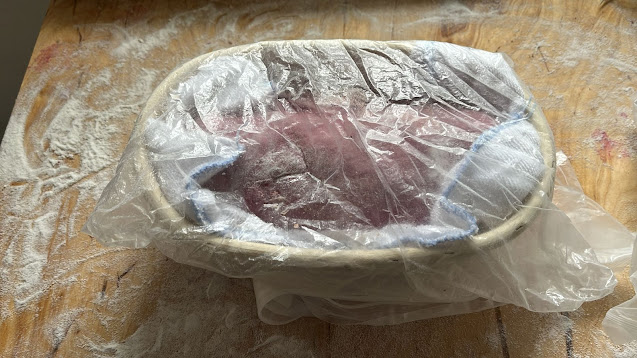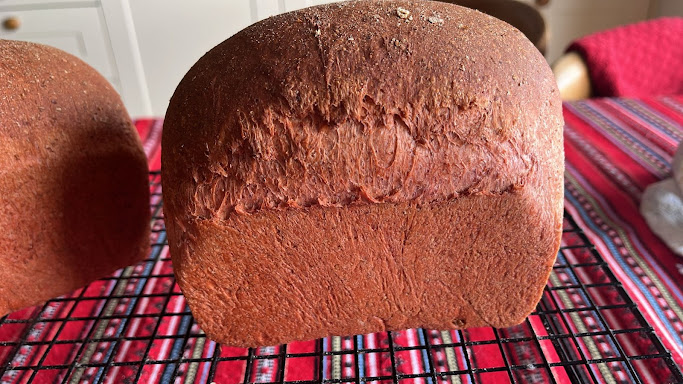Beetroot Bread - Two Ways

Welcome to another step-by-step recipe from BreadClub20. Why not drop by our main Facebook page by clicking here.... If you like what you see and enjoy the recipe, we hope you join us by 'Liking' and 'Subscribing'.
It's beetroot in British English, beets in American English and they have been grown from the time of the Ancient Egyptians...but they grew it for the greens rather than the deep red root that we enjoy so much today.
Back in the 17th century, they coloured their wine with beetroot juice. Today, we're going to colour our bread.
During the First World War, Europeans suffered great food hardships. Eating too many beetroots meant that betanin (the red colour compound) often caused Manglewurzel Disease. The tips of the fingers and toes became discoloured and urine and stools became red in colour. Once diets improved, all traces disappeared.
And on that cheerful note....let's bake bread!
We're making beetroot bread - two ways.
Secondly, we will make Beetroot bread, leavening the dough using dried baker's yeast.
So, if you'd like to bake both or just one....I hope you enjoy your very distinctive red bread
Beetroot and Rye Sourdough

Beetroot Bread
Beetroot : you'll need 300 gms of beetroot juice. You can either extract the juice using a juice extractor or you can buy beetroot juice from the local health store. If you're using fresh beetroot juice, the pulp can be composted.
INGREDIENTS
300 gms of beetroot juice
400 gms strong white bread flour
100 gms wholegrain/wholemeal flour
50 mls of olive oil
10 gms crushed sea salt
5 gms of dried yeast or 4 gms of instant active yeast or 10 gms of fresh yeast.
Remember, the dried yeast and the fresh yeast options will need activating before use
METHOD
1. Add the flour to a large bowl. Add the yeast and mix well. Add the salt. Finally, add the beetroot juice.
2. Bring together into a sticky mix and then knead on an unfloured board for about 11 - 12 minutes until you have a soft and silky dough.
3. Place in a lightly oiled bowl, cover and leave to proof in a warm place. The dough will need to double in volume during this proofing.
4. Tip the dough out onto a lightly floured surface and knock it back (sometimes called de-gassing)
5. Divide the dough into two. Gently form into boules. Cover and leave to rest for 15 minutes.
6. Now shape into boules or to fit one-pound prepared loaf tins. In the latter's case, you must ensure that the dough half-fills the loaf tin.
7. Now cover and allow to proof until doubled or until the shoulders of the dough reach a level with the top of the tins.
8. Preheat the oven to 230⁰C. Add a tray of water to create steam. When you're ready to bake, drop the temperature to 200⁰C and place the loaves into the oven. Mist the bread to add to the steam.
9. Bake for 30 minutes (maybe 35 minutes) until the bread is golden and sounds hollow when tapped on the underneath.
10. Cool on a rack.




















Comments
Post a Comment